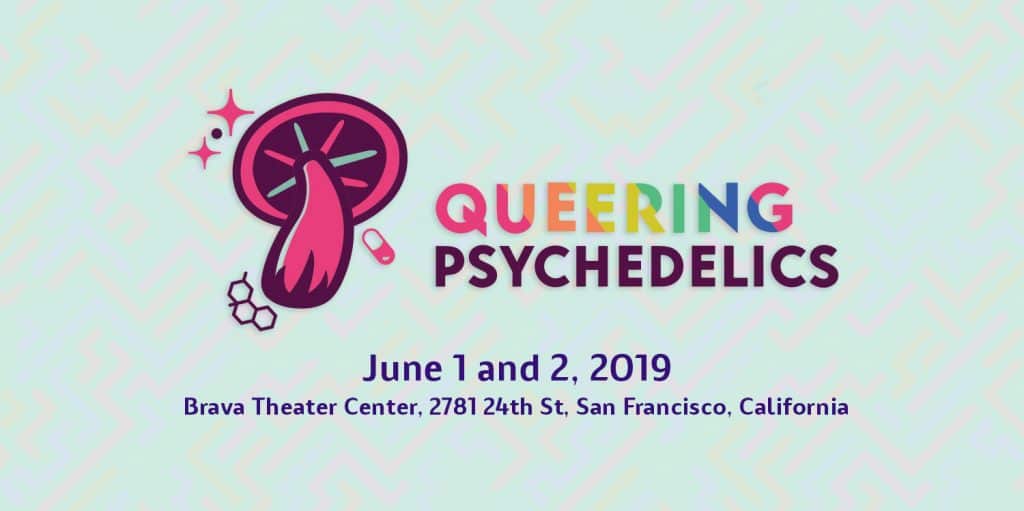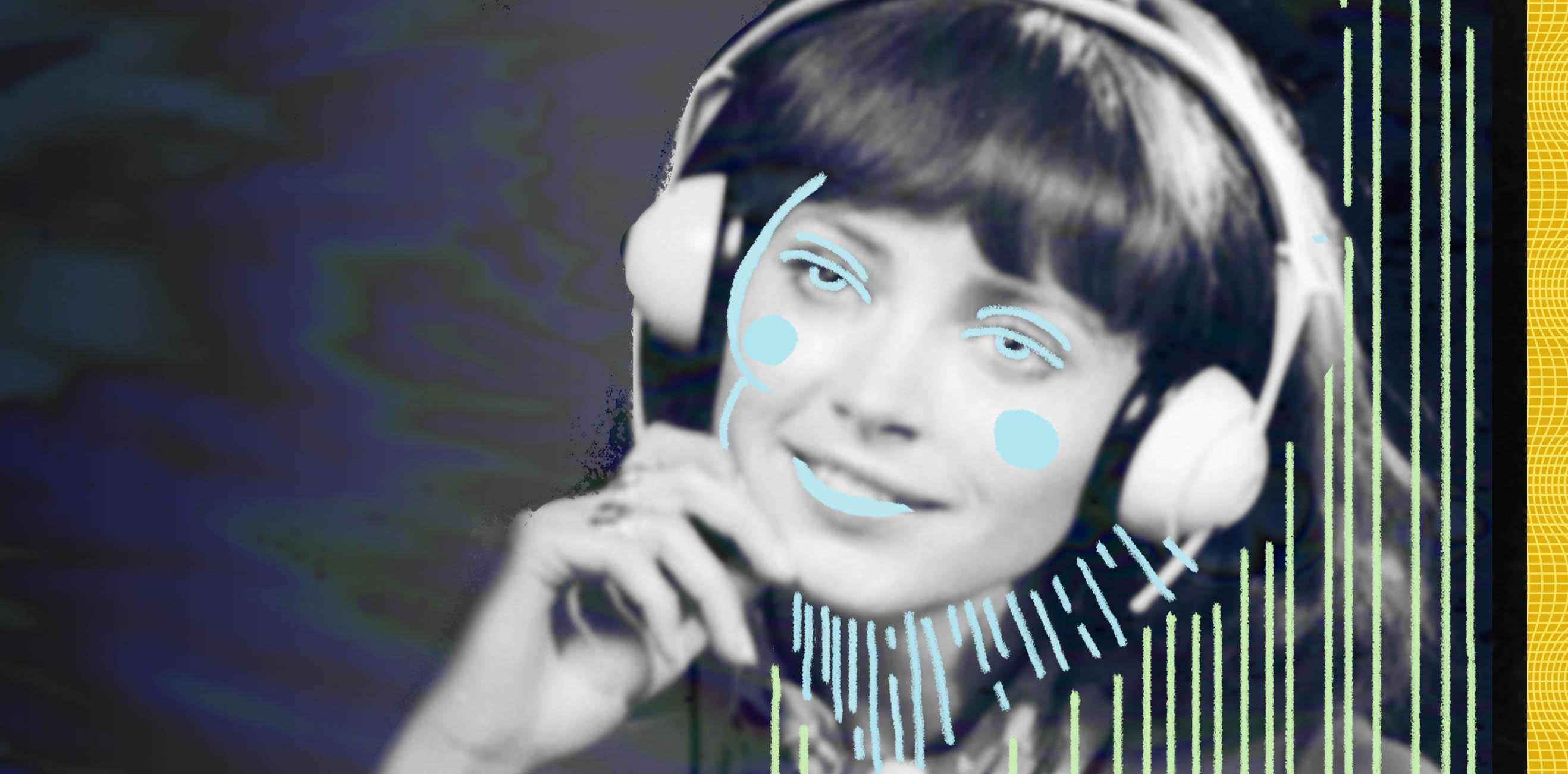- The Greater Mysteries of Plant Music - December 23, 2019
- Sonic Journeys: An Interview with Byron Metcalf - September 25, 2019
- High Holy Strangeness: A Playlist for Ketamine by Eric Sienknecht - March 20, 2019
I was introduced to Eric Sienknecht last summer while we were at the Beyond Psychedelics conference in Prague. Eric is a psychologist and the co-founder of Polaris Insight, a clinic in San Francisco that offers ketamine-assisted psychotherapy for the treatment of various mental health conditions. Both of us were in Prague to give talks on environmental factors in psychedelic psychotherapy, and a mutual friend introduced us as “music people.” As we began talking, I could tell right away that we were very different in our musical tastes. I always feel like this is a good place to start in getting to know someone because it could be a chance to learn something new.
Pretty quickly, it became obvious that Eric knew a lot about newer (post-1980s) electronic dance music, specifically, a genre called “trance” that uses a combination of uplifting melodies and tempos between 132 to 138 beats per minute. I was impressed by the precision with which he discussed his preferences; it indicated a level of intimacy with the music beyond that of the casual listener. Now, I know very little about the electronic dance music genre, considering its size. I did experience its power firsthand from having gone to raves as a teenager in the 1990s, and I have since thought of it as being uniquely functional; meaning, that this is music that actually does something. Specifically, it had made me dance like a possessed maniac, literally all night long, without any chemicals in my system, except, perhaps, a few underage beers that we drank in the parking lot beforehand.
In the context of psychedelic psychotherapy, all music becomes functional, performing a vital role in the therapeutic process.
In the context of psychedelic psychotherapy, all music becomes functional, performing a vital role in the therapeutic process. The music chauffeurs the participant’s consciousness through the psychedelic experience and evokes material from deep layers of the psyche. Something about the interaction of music and medicine potentiates powerful healing energies. Without music, psychedelic therapy, at least as we know it today, is impossible.
Later that afternoon, I watched Eric present at the conference with another founding therapist at Polaris Insight, Veronika Gold. The topic was set and setting, and they shared a lot of practical knowledge gleaned from their day-to-day work practicing ketamine-assisted psychotherapy. These were not therapists with an idea of a psychedelic therapy practice somewhere out in the vagueness of a post-legalization future. They were currently doing real, legal, psychedelic work with ketamine, and their experience was obvious. They were grounded and had a confidence in their skills that you cannot get from just reading theory.
A few months later, I reached out to Eric, and he agreed to share a playlist that is similar to the kind he uses during sessions at Polaris Insight. The ketamine experience is roughly an hour long, so playlists used for it are correspondingly shorter than ones used for classical psychedelics. The one that Eric shares with us here comprises an hour and a half of ambient electronic music; a gentler version of the trance music that he loves. Eric explained that the extra half hour allows for a musical buffer to hold the patient before and after the effects of the medicine. In the past, I have created several playlists to be used with ketamine, and mine were never more than an hour in length, per the request of the ketamine clinics I made them for. From my perspective now, I think that having some extra time in the playlist is preferable and that the patient should not be rushed through the experience, especially during the re-entry phase.
Since Eric sent the playlist to me, I have listened to it a number of times. For one of these sessions, I arranged to listen to it with a medical doctor who, after an intake and preparatory session, legally administered me 100 milligrams of oral ketamine. I had the full experience, supine with headphones and an eyeshade. There is a lot to be said about the phenomenology of ketamine, but I am going to focus here on describing the musical effects I was conscious of during the experience.

Come join us in Queering Psychedelics! Buy tickets here
As it came on, the first thing I noticed was the quality of the music: it had a kind of intensity and aural vividness that was very different from normal listening. The first song on the list, Snow Park by Connect.Ohm, began with a powerfully deep drone. The single note, lacking a major or minor orientation, uncurled in my awareness like a glowing line that separated the sunny and more menacing aspects of reality. Eric had told me that he intentionally wanted some darkness in the music, but that it would ultimately resolve into a sense of being uplifted. I reminded myself of his intention and surrendered, the best I could, to the flow of sensations.
I knew that ketamine is often used as an anesthetic, so at one point I tried gently pinching myself and felt mostly indifferent to the remote flash of pain somewhere in my far-off body. Paradoxically, I also found myself able to be present in my body in a way that is rare for me. This was an effect that happened via the music: as rhythmic elements pronounced themselves, I felt them convert into vibrant waves of energy that flowed through me, stirring complex blends of emotion from what felt like invisible nodal points in my anatomy. This especially happened with the trippy syncopation of the song Living Stones by KiloWatts. The benevolent strangeness of this music seemed to invite me into direct contact with parts of myself that are usually hidden; parts that, in the moment, seemed to be continuous with a much larger, patterned vision of reality.
I eventually lost all sense of what could have been producing the sounds I was hearing and began to encounter the songs as if for the first time again.
The energy of the playlist slowly began to increase but never got too intense. I sensed it moving past me as a vast and richly-produced tapestry of sound, with huge reverberations and echoes in contrast to dry, in-your-face elements, glitchy sounds, and smooth organic figures. Like most electronic music, these songs were heavily repetitive, which is enough to induce its own trance-like altered state of consciousness. I eventually lost all sense of what could have been producing the sounds I was hearing and began to encounter the songs as if for the first time again. I felt incredibly grateful to be listening to this music on headphones. It gave a sense of intimacy with the sounds that seemed to be originating from the center of my head. I remember thinking “this is headphone music.” And even now, I agree; this is not the kind of electronica that you hear gently throbbing in the background at a crowded brunch spot. This music is a tool for self exploration and its subtlety of production calls for listening at an immersive level on either headphones or a nice stereo.
While listening to certain tracks, especially the ones by Carbon Based Lifeforms and Ishq, I was struck by how almost all of this music was built around a constantly droning fundamental note. Musical drones convey a sense of the infinite, a counterpoint to the climax and directionality of Western music, in which the listener is always anticipating the next crescendo or chord change. The music on this playlist also has consistent rhythms and drumbeats that create a distinct feeling of movement. Combining drones and rhythm, as this music does, provided me with a sense of moving through an infinite space. The space opened up by ketamine is strangely infinite and a-temporal, and the music in this playlist is structurally well-suited to help move through it in a calmly energetic way.
I should add that this playlist includes a few songs with lyrics, something generally not recommended in psychedelic work, so as to avoid influencing the participant’s experience. None of the words in the songs here are conventional song lyrics, but instead are usually just one or two words that repeat enigmatically at points throughout a given composition. The song Abiogenesis by Carbon Based Lifeforms features a woman’s voice repeating strings of random English letters in what sounds like a sample from recordings of the mysterious numbers stations used in the Cold War. After listening to these songs again and again, I felt that the words were decontextualized enough to not carry an overly-specific meaning that would affect the outcome of therapy. Instead, I found them to act as non-specific ghostly prompts for feelings associated with long-submerged fragments of memories. As these feelings arose, I realized that many of them had to do with ideas of what, at earlier points in my life, I thought the future could or should have been, but which had been lost in the process of growing up and watching very specific changes take place in the world around me. Theorist, Mark Fisher used the term “hauntology” to describe this sense of nostalgia for lost futures. The return of these thought-feeling complexes was an eerily poignant experience, and strikes me as promising territory for deep psychotherapeutic work.
As the ketamine began to ebb from my system, I reflected on how different this playlist was from the ones I have made for this medicine. I mostly used music by Roedelius and Steve Roach, both of which are less rhythm-driven but equally synthetic as far as the tones are concerned. There does seem to be some agreement among practitioners that music made with synthesizers is the best for ketamine experiences. I have even heard some speculate that this is because of a resonance between the origins of this specific music and medicine, both of which are synthetically created. Personally, I think it has more to do with the timbral complexity of synthesized tones than anything else.
It occurs to me that one barrier to a profound experience with the music presented here could be negative associations with electronic music in general. While no one playlist is appropriate for everyone, I do like to believe that, in the depths of a psychedelic experience, preconceived biases like these can drop away and the music’s otherness can become a strength; a mysterious new pathway to the mandala of The Self. Becoming open to new experience, and the expansive feelings that come along with it, can be its very own therapeutic mechanism. On the other hand, if someone already has positive associations with electronic music, then its benefit would be obvious.
Listening to this playlist on ketamine reminded me that music is the teacher and that the work is to move toward it, never quite arriving, but feeling incredibly lucky when in its flow. It was an honor to road-test Eric’s playlist. I found it to be a powerful vehicle for navigating the high holy strangeness of the ketamine experience. You can find Eric Sienknecht’s playlist for ketamine here.
Art by Karina Alvarez.
Take a minute to browse our stock:
Did you enjoy reading this article?
Please support Chacruna's work by donating to us. We are an independent organization and we offer free education and advocacy for psychedelic plant medicines. We are a team of dedicated volunteers!
Can you help Chacruna advance cultural understanding around these substances?














